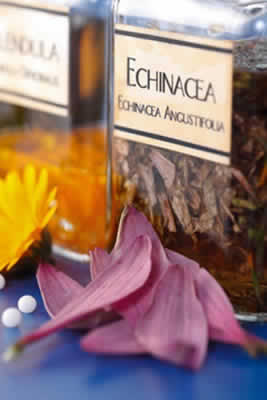Holy basil (Ocimum sanctum), also known as Tulsi, is an Indian herb known for its beneficial effects on conditions such as stress and depression. Holy basil is used in traditional Ayurvedic medicine as an “adaptogen” to counter life’s stresses.
Holy Basil Anxiety Benefits
Stress is associated to many aspects of both physical and mental health. Over time, stress can negatively affect the health of the nervous, immune and digestive systems. Holy basil has been used in traditional Ayurvedic medicine as an adaptogenic herb to improve the body’s ability to cope with stress. According to a research reported in the Sep 2008 edition of the Nepal Medical College Journal, 500 mg of tulsi extract taken two times a day can significantly reduce the intensity of generalized anxiety disorder. A 1991 study reported in the “Indian Journal of Pharmacology” compared anti-stress effects with those of Korean ginseng (Panax ginseng) and Siberian ginseng (Eleutherococcus senticosus ), found that tulsi was a more powerful herb. A study reported in the 2011 Research Journal of Pharmaceutical, Biological and Chemical Sciences showed that mice given a holy basil extract experienced important reduction in stress levels when compared to mice given ginseng.
In a study reported in the Nov 2003 edition of the “Indian Journal of Experimental Biology,” tulsi was showed to have calming propertieson the central nervous system that may benefit panic disorder. Holy basil may impact the secretion of neurotransmitters in the brain, such as dopamine and serotonin. Epinephrine and norepinephrine are used in coping with stress. In a study found that animals that received the extract demonstrated significant normalization of epinephrine, norepinephrine, serotonin, and MAO. Tulsi herb exerts a calming effect by preventing elevations in the cortisol. Nicknamed the ‘stress hormone’,cortisol production increases in response to chronic stress. A notice reported by the California Naturopathic Doctors Association in 2007 describes tulsi as an helpful factor of reducing the cortisol in individuals experiencing cancer and related depression.
Alcohol extracts of this herb demonstrated important anti stress effects in mice exposed to acute and chronic noise stress. A study using male albino rats, via intraperitoneal administration of 70% ethanolic extract of tulsi, dosed at 100 mg/kg body weight, were able to withstand sub-chronic broadband white noise exposure at 100 dB for 4 hours a day for a total of 15 days. This application of the extract prevented noise-induced increases in the levels of the neurotransmitters dopamine and serotonin turnover in specific brain regions.
Dosage
Holy basil standardized extract, 400 milligrams daily, for stress and adrenal health. Studies show that taking holy basil at 500 mg twice daily after meals has a important effect in reducing generalized anxiety and depression. Because multiple constituents of holy basil have been shown to combat stress, an efficacious supplement must provide each of these important active components at therapeutic dosages. Researches have shown that eugenol, especially, helps to combat stress and enhance mental clarity. Also, research has shown that the triterpenoic acids isolated from holy basil effectively improve the body’s response to stress. Holy basil supplements are available as tea, tablets, capsules, and liquid extracts. The best holy basil supplements are in soft-gel capsules.
 Neem seed and leaf have anti-microbial, anti-fungal and anti-viral effects. In test tubes, neem has been shown to have important properties on both gram-positive and gram-negative organisms and other bacteria that cause a wide array of human and animal diseases including Escherichia coli, streptococcus and salmonella. A 0.2% concentration of neem had the same anti-bacterial property as penicillin G. Its antiseptic effects help to prevent periodontal diseases. In a scientific review published in the June 2002 edition of the “Current Science“, the authors concluded that neem oil has a wide spectrum of antibacterial action in vitro against fourteen different strains of pathogenic bacteria. In a clinical trial, a cream containing neem seed extract, saponins of Sapindus mukerossi and quinine hydrochloride eliminated all symptoms in 10 of 14 women with chlamydia compared with none of 4 women given placebo cream.
Neem seed and leaf have anti-microbial, anti-fungal and anti-viral effects. In test tubes, neem has been shown to have important properties on both gram-positive and gram-negative organisms and other bacteria that cause a wide array of human and animal diseases including Escherichia coli, streptococcus and salmonella. A 0.2% concentration of neem had the same anti-bacterial property as penicillin G. Its antiseptic effects help to prevent periodontal diseases. In a scientific review published in the June 2002 edition of the “Current Science“, the authors concluded that neem oil has a wide spectrum of antibacterial action in vitro against fourteen different strains of pathogenic bacteria. In a clinical trial, a cream containing neem seed extract, saponins of Sapindus mukerossi and quinine hydrochloride eliminated all symptoms in 10 of 14 women with chlamydia compared with none of 4 women given placebo cream. A study reported in the April 2000 edition of Journal of Women’s Health and Gender Based Medicine, scientists examined the effects of a Vitex agnus-castus extract on the symptoms of PMS. After taking the Vitex for 3 menstrual cycles, 93% of the women reported a reduction or cessation in their symptoms. A study reported in a 2001 edition of the “British Medical” Journal studied the effectiveness of Vitex for PMS symptoms such as irritability, breast tenderness and headaches. Women who took Vitex experienced a 52% decline in PMS symptoms compared to a 24% decline in the placebo group. A clinical trial found that women taking chasteberry had slightly greater relief from symptoms of PMS, than those taking vitamin B6. The 175 women were randomized to receive daily treatment with one standardized chasteberry extract capsule plus one placebo capsule or two 100 mg capsules of vitamin B6. Duration of therapy was three menstrual cycles. In comparison with vitamin B6, chasteberry was linked with “a considerably more marked alleviation of typical PMS complaints, such as breast tenderness, edema, inner tension, headache, constipation, and depression.” Consequently, 77.1% of participants taking chasteberry reported improvements, compared to 60.6% of those in the vitamin B6 group. (Although women wishing to conceive were excluded at the beginning of the trial, 5 women taking chasteberry became pregnant during the course of the study).
A study reported in the April 2000 edition of Journal of Women’s Health and Gender Based Medicine, scientists examined the effects of a Vitex agnus-castus extract on the symptoms of PMS. After taking the Vitex for 3 menstrual cycles, 93% of the women reported a reduction or cessation in their symptoms. A study reported in a 2001 edition of the “British Medical” Journal studied the effectiveness of Vitex for PMS symptoms such as irritability, breast tenderness and headaches. Women who took Vitex experienced a 52% decline in PMS symptoms compared to a 24% decline in the placebo group. A clinical trial found that women taking chasteberry had slightly greater relief from symptoms of PMS, than those taking vitamin B6. The 175 women were randomized to receive daily treatment with one standardized chasteberry extract capsule plus one placebo capsule or two 100 mg capsules of vitamin B6. Duration of therapy was three menstrual cycles. In comparison with vitamin B6, chasteberry was linked with “a considerably more marked alleviation of typical PMS complaints, such as breast tenderness, edema, inner tension, headache, constipation, and depression.” Consequently, 77.1% of participants taking chasteberry reported improvements, compared to 60.6% of those in the vitamin B6 group. (Although women wishing to conceive were excluded at the beginning of the trial, 5 women taking chasteberry became pregnant during the course of the study). Many research done by scientists in Germany showed that echinacea is effective primarily by increasing the number of white blood cells, thereby boosting the immune system and increasing the body’s ability to fight infections. Echincaea has healing, anti-microbial, antiinflammatory and nonspecific, immune-stimulant activity, primarily through the stimulation of fibroblasts and activation of phagocytosis. In other words, echinacea stimulates the overall activity of the cells responsible for fighting all kinds of infection. Unlike antibiotic drugs, which are directly lethal to bacteria, this herb makes our own immune cells more efficacious in attacking bacteria, viruses and abnormal cells, including cancer cells. The effect of echinacea is considered remarkable in its ability to stimulate the production and action of interferon. The chemical components of interferon are very important in activating white blood cells to destroy cancer cells and viruses. Lab experiments have confirmed that extracts of the echinacea root contain interferon-like effects.
Many research done by scientists in Germany showed that echinacea is effective primarily by increasing the number of white blood cells, thereby boosting the immune system and increasing the body’s ability to fight infections. Echincaea has healing, anti-microbial, antiinflammatory and nonspecific, immune-stimulant activity, primarily through the stimulation of fibroblasts and activation of phagocytosis. In other words, echinacea stimulates the overall activity of the cells responsible for fighting all kinds of infection. Unlike antibiotic drugs, which are directly lethal to bacteria, this herb makes our own immune cells more efficacious in attacking bacteria, viruses and abnormal cells, including cancer cells. The effect of echinacea is considered remarkable in its ability to stimulate the production and action of interferon. The chemical components of interferon are very important in activating white blood cells to destroy cancer cells and viruses. Lab experiments have confirmed that extracts of the echinacea root contain interferon-like effects.